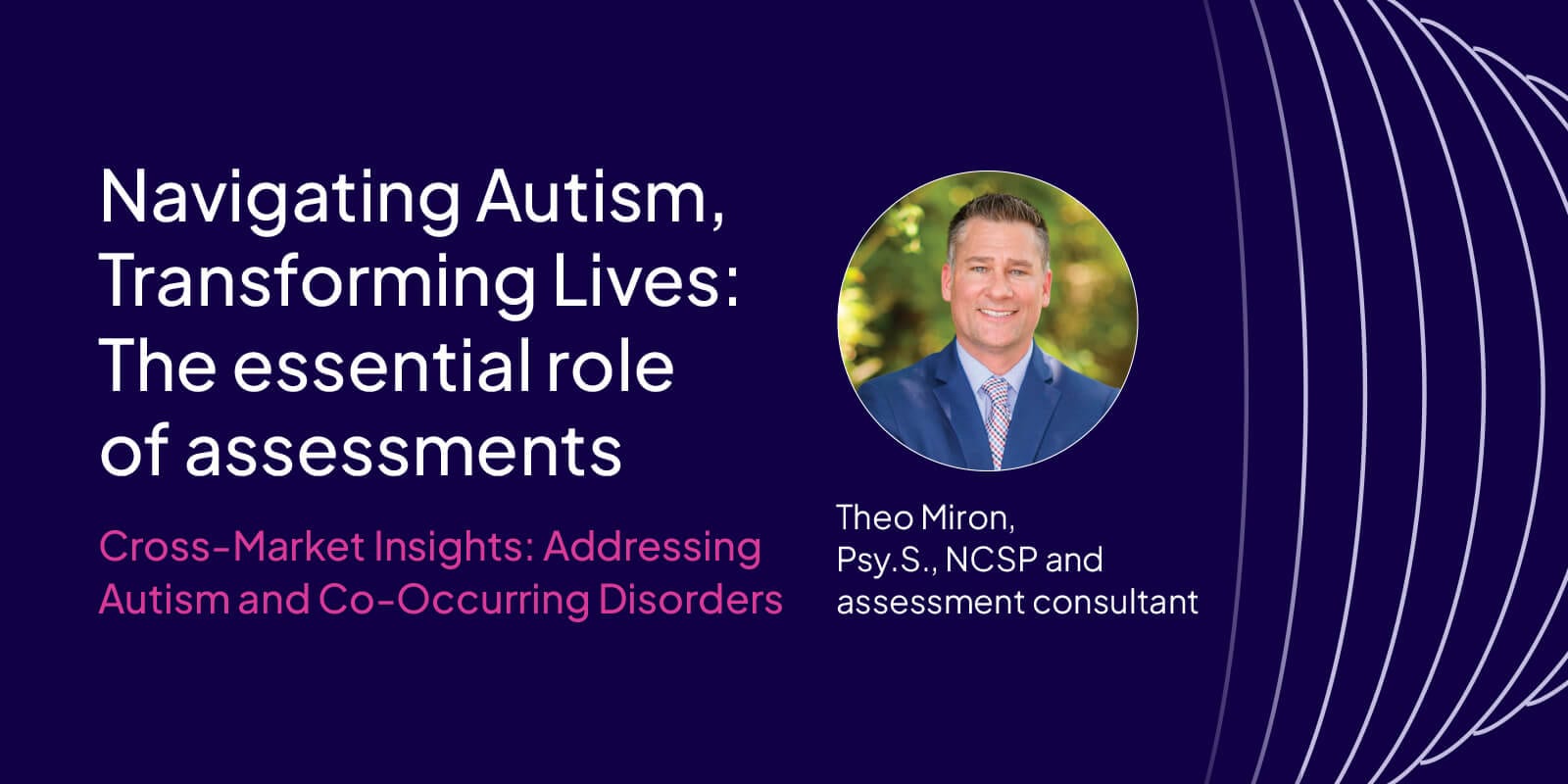Cross-Market Insights: Addressing Autism and Co-Occurring Disorders
by Theo Miron, PsyS. School Psychologist and Clinical Assessment Consultant, Pearson

Comorbidities are common in autism. Some data suggest that almost 78 percent of autistic children have at least one co-occurring condition (and nearly half of children have two or more). The likelihood of experiencing comorbidities increases with age.
In an engaging conversation on the "Navigating Autism, Transforming Lives" podcast, Theo Miron, school psychologist and assessment consultant for Pearson Assessments, shared insights on the prevalence of co-occurrence of autism with other conditions and how assessments can reveal individual areas of successes, strengths and needs that can overlap between diagnoses.
“Different conditions are common along an individual’s full lifespan. Conditions most often diagnosed in childhood are ADHD, intellectual disabilities, anxiety, sensory processing disorders, and sleep disorders. Depression, OCD, and mood disorders happen more into late adolescence and adulthood.”, according to Miron.
It’s essential for clinicians to be mindful of comorbid conditions because there is the potential for some conditions, including ADHD, anxiety, or depression, to mask or mimic the core symptoms of autism.
“By assuming everything is a part of autism, we may overlook distinct disorders like ADHD, anxiety disorders, or OCD,” Miron explains. “If we delay the diagnoses of co-occurring conditions, it will also delay the appropriate interventions, therapies, or medications for [those] conditions.”
Miron shared insights about the need for clinicians to use a combination of assessments. His recommendation includes domain-specific assessments such as Wechsler Intelligence Scale for Children Fifth Edition (WISC-V) and Clinical Evaluation of Language Fundamentals-Fifth Edition (CELF-5) to assess strengths and weaknesses in distinct domains along with integrated assessments like Vineland-3 and Bayley-4 to give a broader view of how the client functions across domains.
Rather than focusing on deficits identified in assessments, Miron noted, “Clinicians should also highlight the individual’s strengths to shape supportive strength-based goals… These assessment insights then guide the interventions, like choosing appropriate therapies, assistive technologies, or environmental accommodations.”
The episode also highlighted the importance of collaboration across disciplines. When cross-discipline teams come together, individuals with autism and comorbid conditions benefit from a comprehensive, whole person understanding of their needs. Moreover, “A multidisciplinary team can catch nuances a single clinician might miss,” Miron adds.
Caregivers can advocate for more comprehensive care. In addition to communicating information about their children’s strengths and preferences, caregivers are encouraged to request collaboration and assessments that provide a full picture of their strengths and needs.
Understanding the prevalence of autism and co-occurring conditions is an essential part of recognizing the innate complexities and diverse needs of the clients and developing personalized interventions that promote positive long-term outcomes.
“Being aware of comorbidities is essential for ethical, effective, and compassionate care of our clients,” Miron says.
Tune in to the second episode of “Navigating Autism, Transforming Lives” for deeper insights into addressing autism and co-occurring conditions.
 Play
Play
